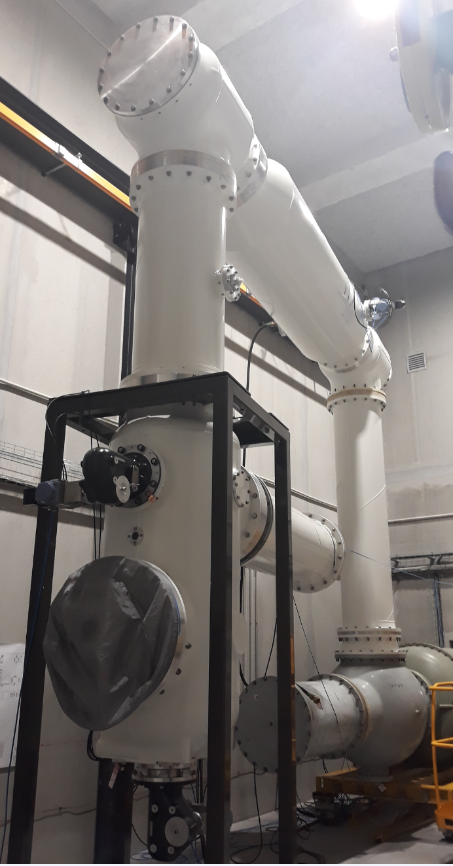A DC voltage source for long term GIS testing
designed by SuperGrid Institute

SuperGrid Institute is working on the development of Gas Insulated Switchgear (GIS) technologies subject to continuous voltage. In AC as in future DC Gas Insulated Substations, diagnosis remains a major component allowing for design improvement towards superior availability and reliability of the equipment.
As part of its research, SuperGrid Institute studies the phenomena of partial discharge under DC voltage. Environmental issues emphasised in the European project PROMOTioN encourage the exploration for possible replacement of SF6 gas and remains a strong component of the study at SuperGrid Institute.
The behaviour of the discharges according to the properties of the substitution gases, the type of defects and the polarity was initially analysed without taking into account the effect of time which is an important factor in DC equipment due to the charge accumulation phenomena.
To carry out this type of study, SuperGrid Institute has designed a gas insulated DC voltage source for long term testing within the framework of the PROMOTioN projet. SuperGrid Institute used its expertise in dielectric and mechanical design of support isolators, in the design of pressure vessels and in the integration of subassemblies (diode rectifier, Voltage divider, and protection device) provided by HIGHVOLT.
This specific equipment connected to a metal-clad AC source has been commissioned. The partial discharge acceptance test were carried out on the full assembly where a level lower than 1 pC was obtained at 600 kV DC. Considering that flashovers may occur when defects are introduced into the test compartment, artificial breakdowns have been initiated to verify the robustness of the components and the proper functioning of security systems.
This equipment is now ready and available to start work on the second phase of the PROMOTioN project.
The work was funded by Horizon 2020 PROMOTioN (Progress on Meshed HVDC Offshore Transmission Networks) project under Grant Agreement No. 691714 and by the French government under the frame of “Investissements d’avenir”, No.ANE-ITE-002-01.


